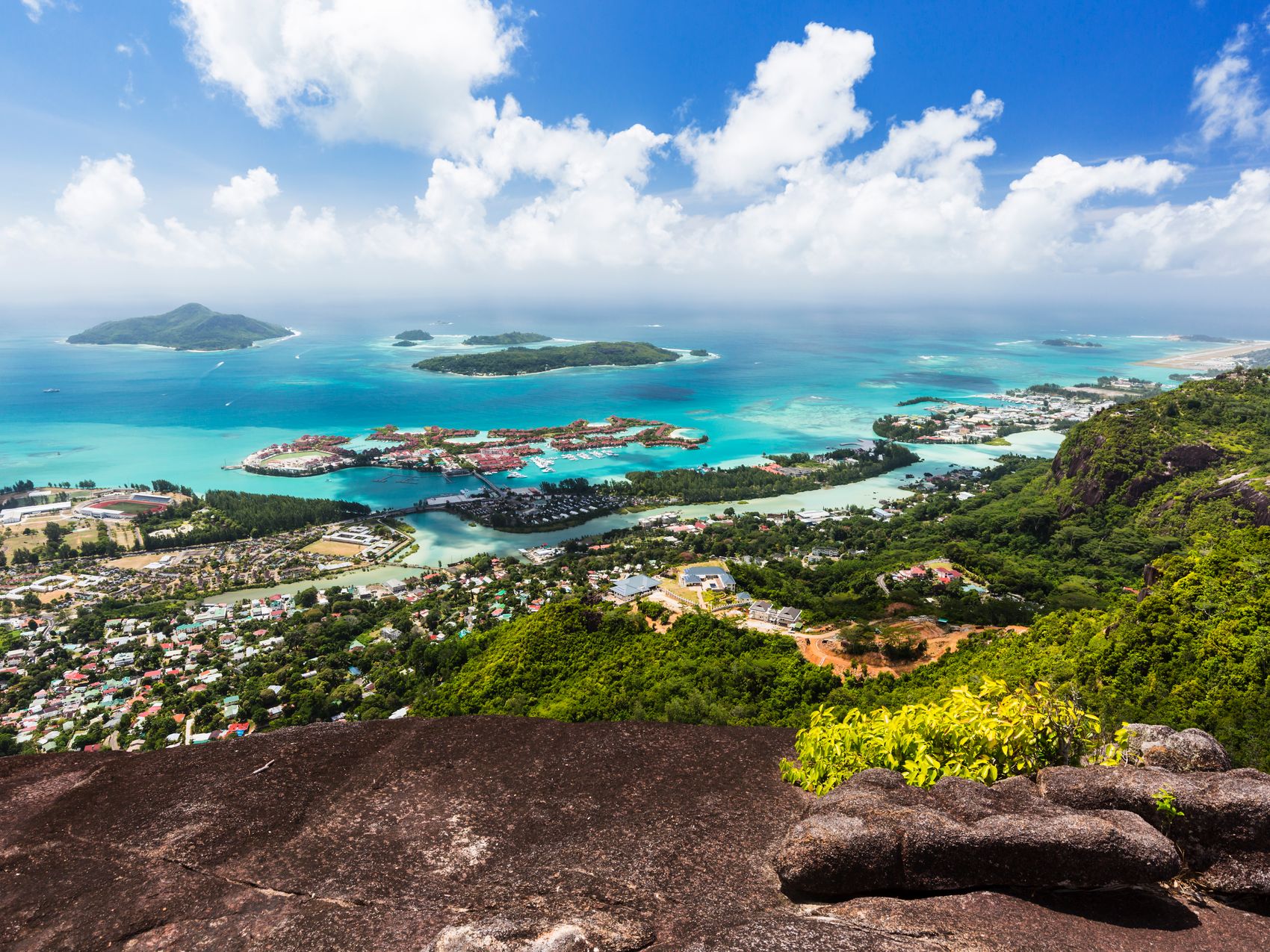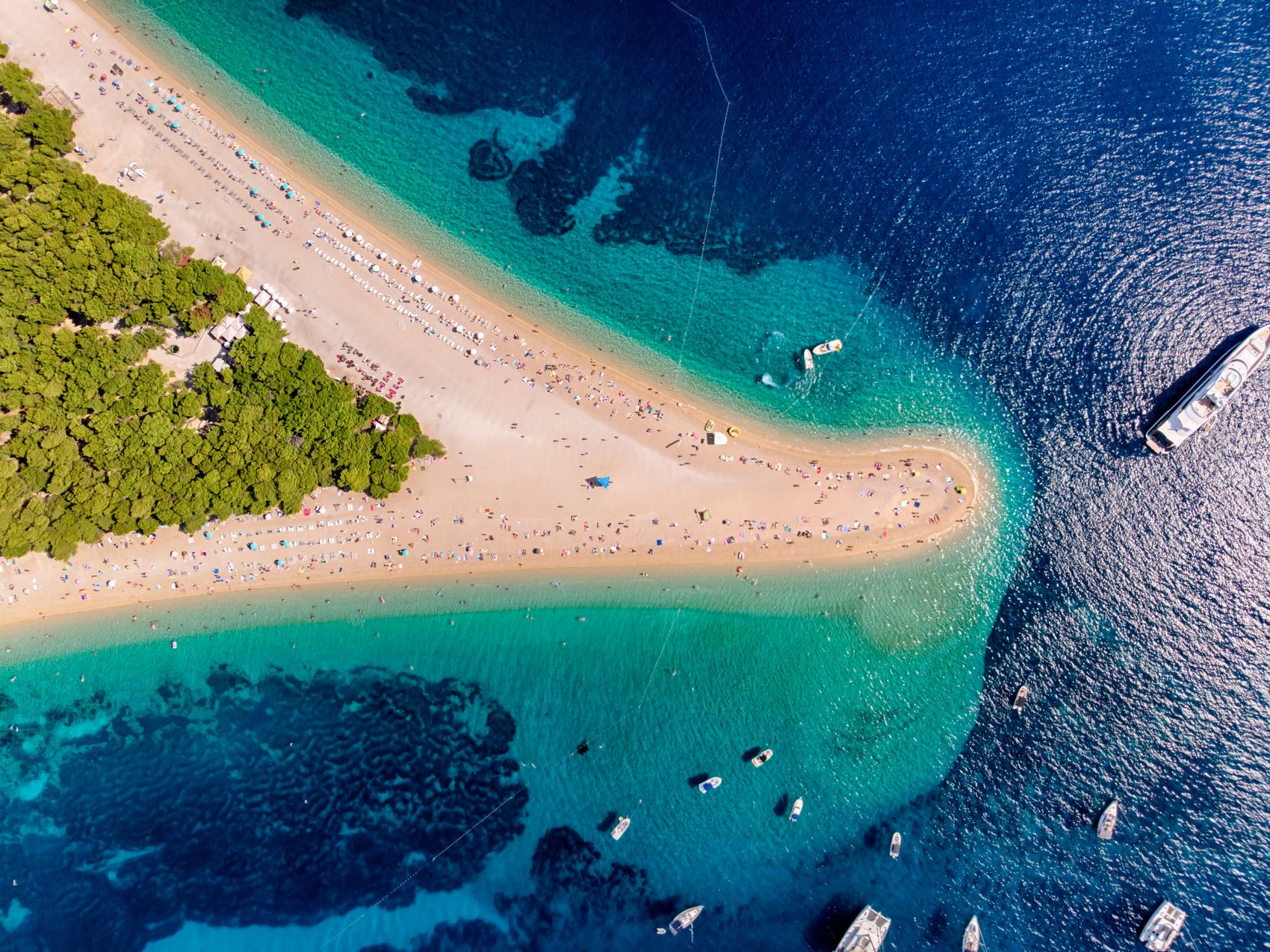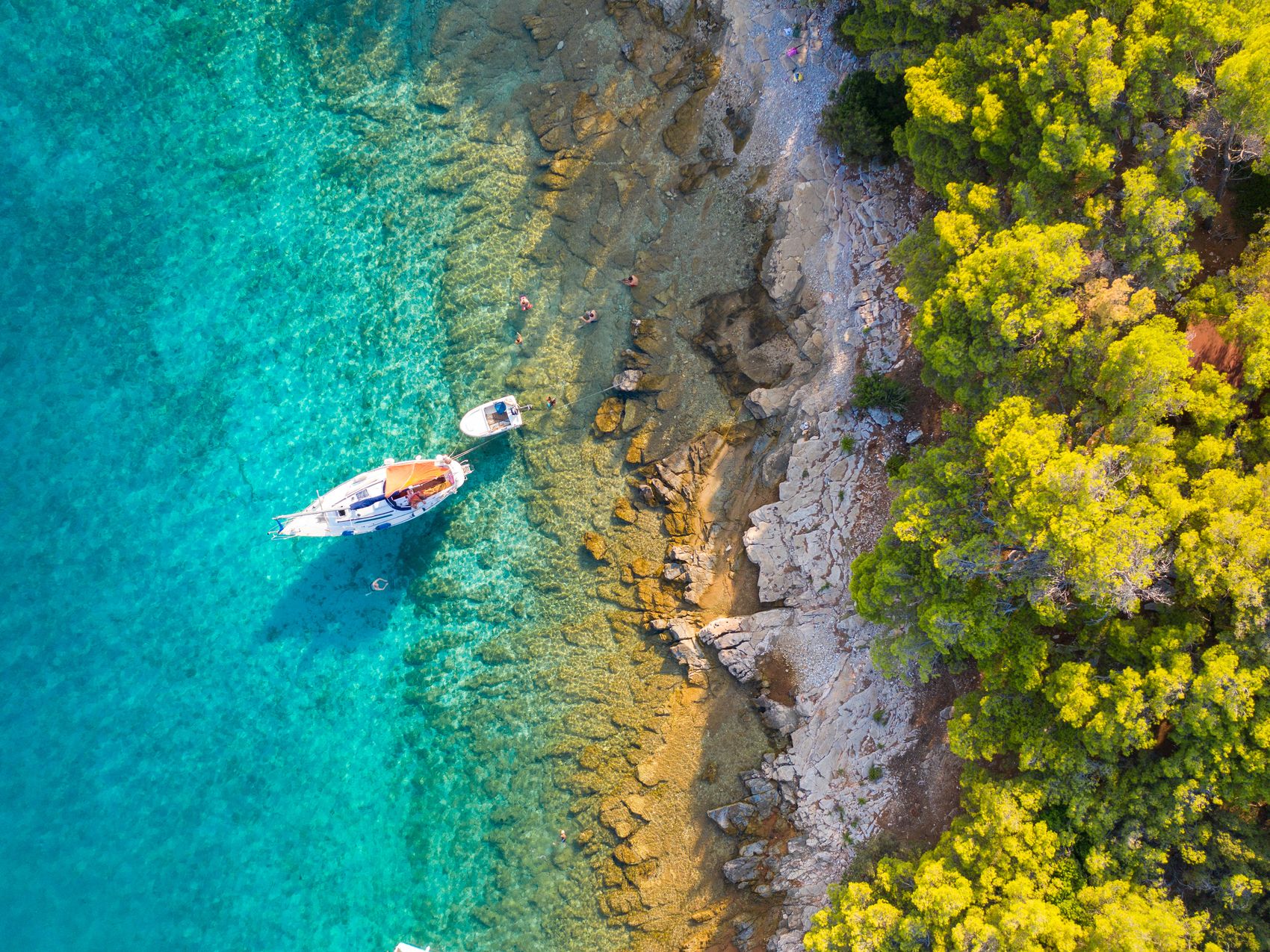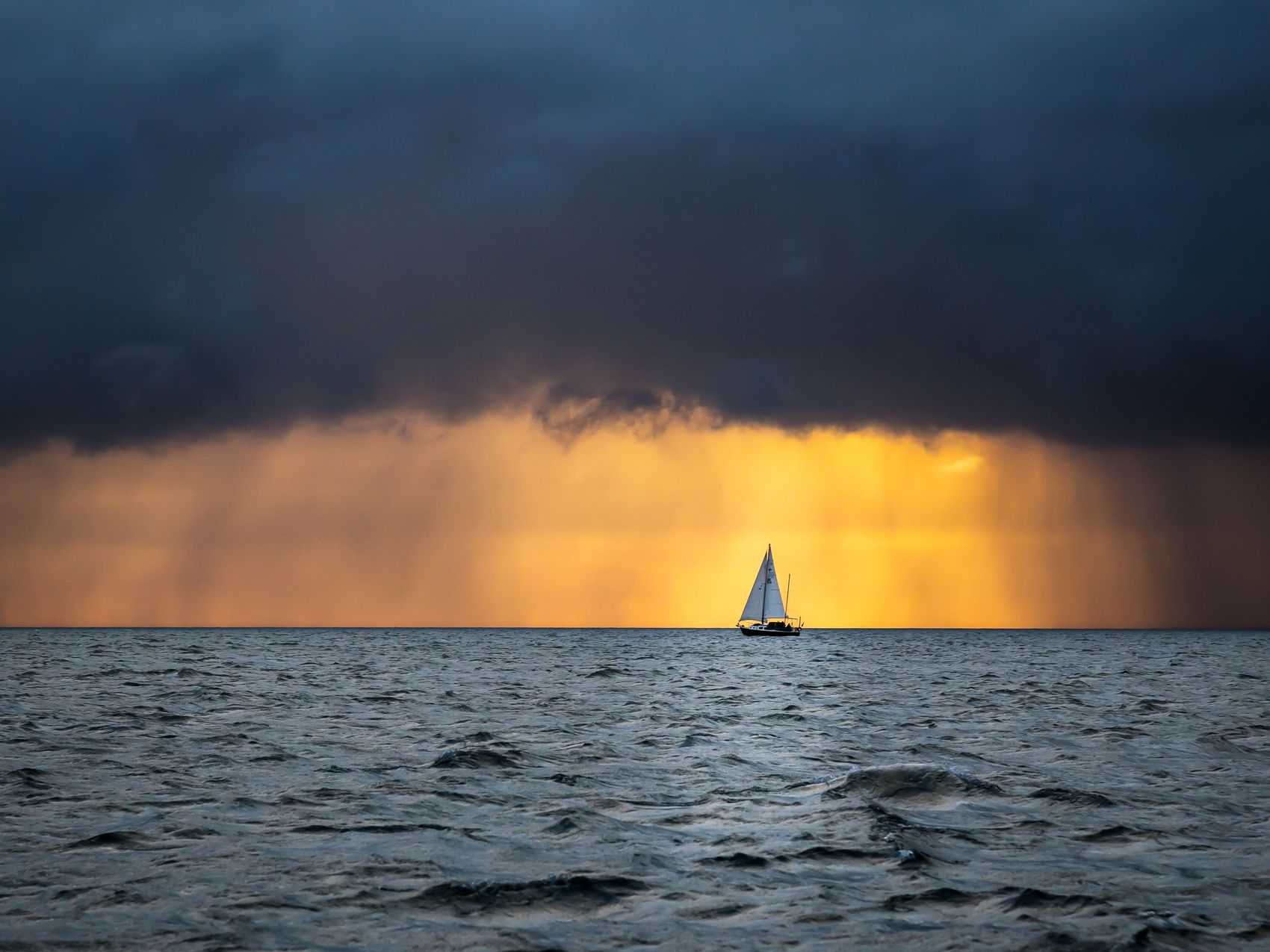Experience an immersive and exotic sailing vacation in the tranquil paradise. Book a catamaran in the Seychelles! Seychelles islands are a feast for the eyes of all sailors who are fascinated by the captivating scenery, untouched nature and silence. These islands are rightly nicknamed paradise on Earth, a pearl or even the Galapagos of the Indian Ocean.
Keep reading to know more about:
- Why sail in the Seychelles?
- How and when is the best time to get onboard?
- What are the sailing conditions here?
- How safe are anchorages, and what is the marine infrastructure?
- How much does sailing in the Seychelles cost?
- Best destinations and routes
Why sail in the Seychelles?
The Seychelles islands are an exceptional sailing area. Do not expect noisy parties, busy ports and overcrowded bays. Part of the islands is protected as a national park. You will enjoy postcard-like picturesque beaches with white sand and palms, an azure sea with corals, a wild jungle, majestic mountains and a rich underwater world. Giant tortoises on the coastline and shoals of fish in the ocean can accompany you during your voyage. Seychelles is a splendid area for snorkelers. The sea is incredibly clear, with a visibility of tens of meters, so you don’t need goggles.
You can catch your dinner in the sea by yourself with no need to own a fishing license. Charter boats are equipped with a grill as standard.
Seychelles is an ideal destination for recreational sailors, families or couples looking for an undisturbed cruise away from civilisation. Short waves, predictable weather, moderate winds and safety make the Seychelles a natural sailing paradise all year round.
How and when is the best time to get onboard?
You will reach Seychelles by plane. After a long flight, you will land at the airport in the capital, Victoria. It is more practical to rent a boat from Eden Marina, situated only 5 km from the airport. You can also get the boat on the island of Praslin. However, expect a rather expensive transfer from Mahé to Praslin. You can choose between an hour-long ferry ride, a 15-minute local flight or a helicopter. A common practice for charter boats is a one-way rent, where you do not have to return the boat to the same island.
The Seychelles are also exceptional in the duration of the sailing season - it is practically a year-round destination. The best conditions for sailing are from May to September/October when the winds are stronger. You can also enjoy the wind (sometimes rain) from December to March. For divers, it is good to know that April and November are the months with the most incredible sea visibility, but your sails will stay folded.
We recommend you plan at least ten days for your sailing adventure. Sea temperatures average 27 degrees and higher throughout the year. The climate is typically equatorial, which means warm and humid. December and January have the rainiest days. The sky is cloudy then, but the downpours are short and intense.
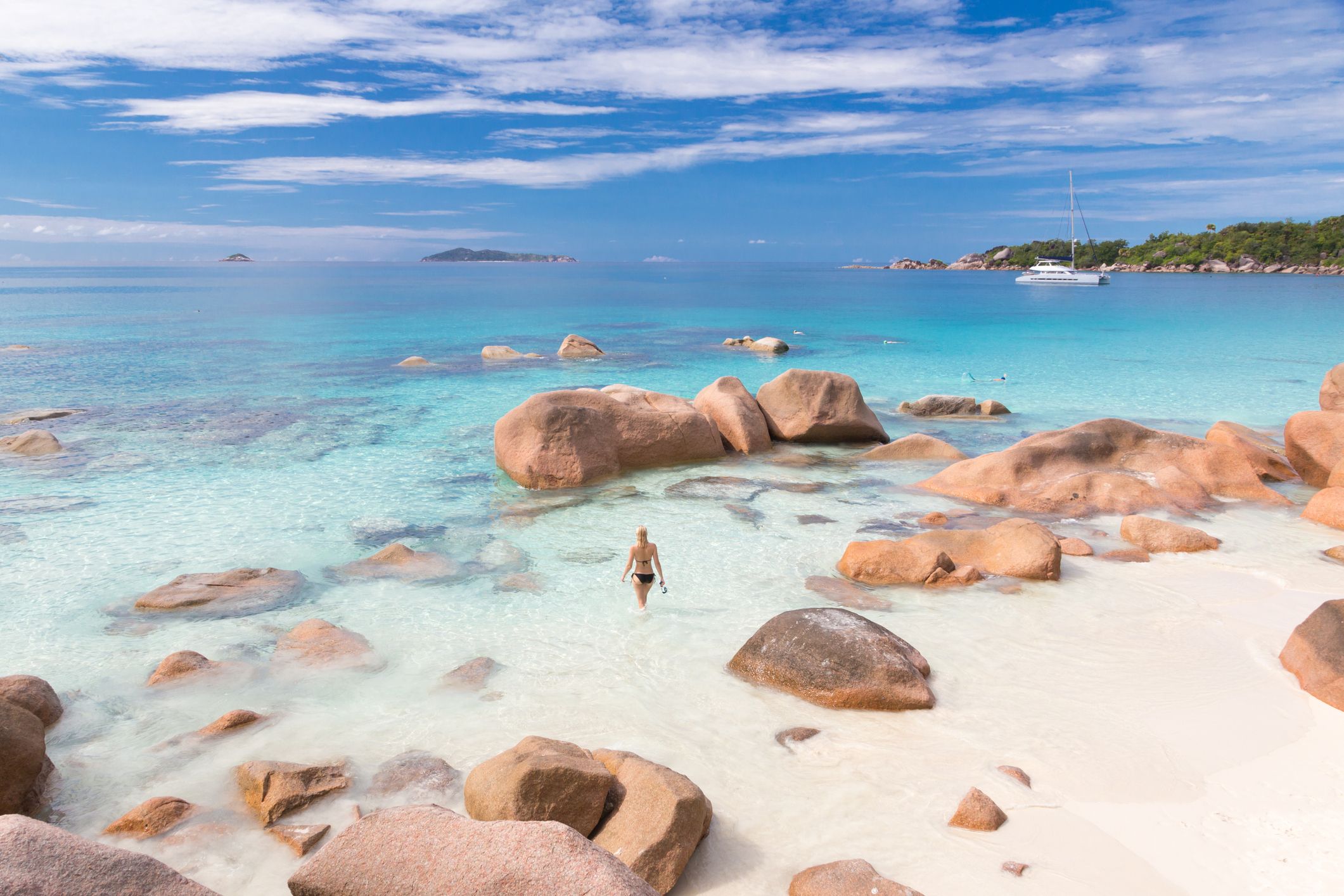
TIP before arrival: To get travel permission before entering the country, fill out this online form and follow the current covid rules. Although the form is online, we recommend having it printed for each crew member.
What are the sailing conditions?
It is safe to say that sailing conditions in the Seychelles are ideal. Trade winds blow in this part of the ocean, and only their intensity and direction change according to the season. The entire area lies outside hurricanes, and winds will not exceed 6 Bft.
If you are not really into sailing on sails, be aware that there is almost no wind in November and April. On the contrary, the northwest wind will fill your sails from the end of November to the end of March. Get ready for higher temperatures and humidity. Expect stronger southeast winds and dryness from May to October. Overall, you will not be surprised by high waves or long-lasting storms in this part of the world.
Sailing at night is prohibited in the Seychelles. It is generally recommended to arrive at the anchorage before 17:00. Navigation between the islands is relatively simple and suitable even for beginners. Follow the route not only through applications but also visually. Unmarked shallows can surprise you. Most of the rescue operations concern catamarans set on the bottom.
What is the marine infrastructure like, and which anchorages are well protected?
There are only three marinas - the largest is the Eden Marina on the island of Mahé; another sought-after marina is Baie Sainte Anne on the island of Praslin and La Digue Marina on the island of the same name.
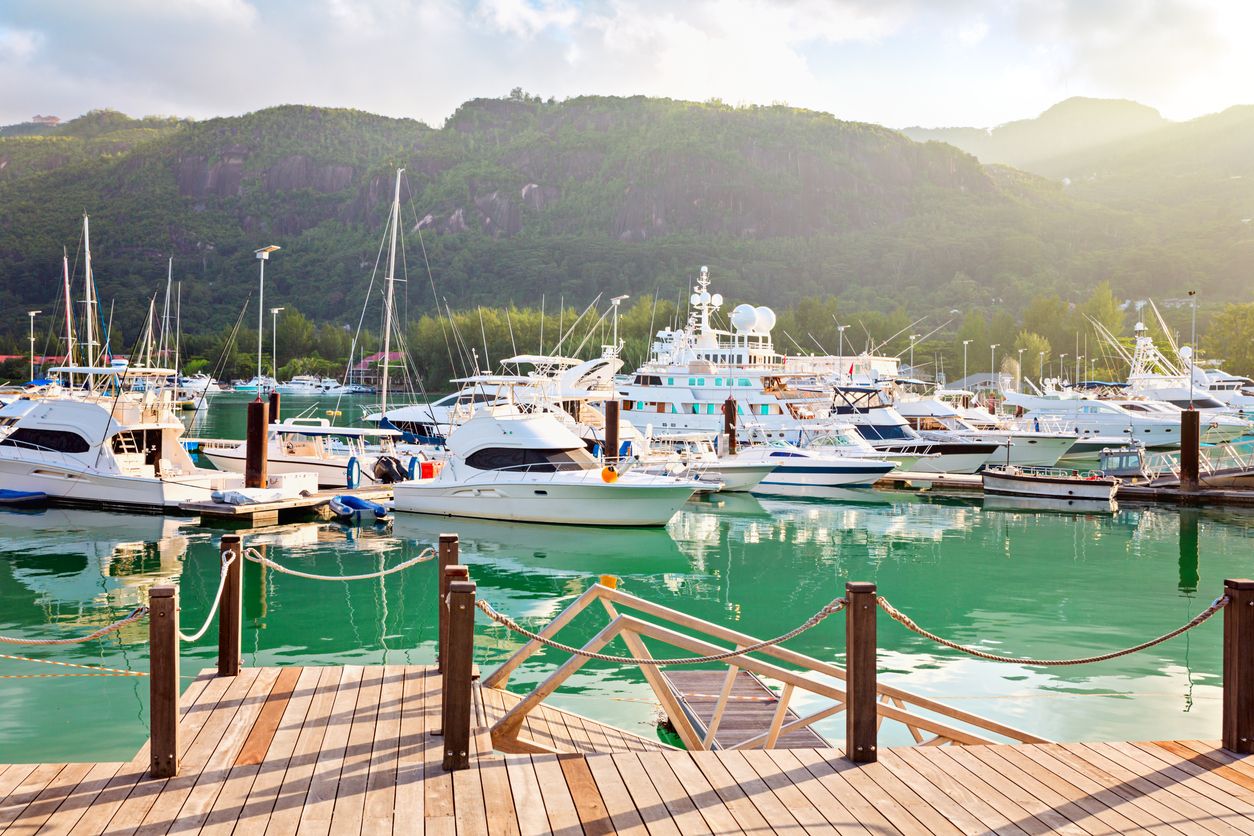
In some bays, you can get lucky with buoys, but in most cases, you just drop the anchor and tie the lines to the trees. Watch out for corals when anchoring! To be safe, follow a simple rule - anchor where you can only see the white bottom (sand) and nothing dark (coral). The destruction of coral is punishable by prison.
In stronger winds, anchoring can be challenging; unfortunately, Seychelles does not offer many well-protected anchorages. Study the sailing guide carefully; it happens that the same side of the island could be inaccessible now, but in a few weeks, you can anchor here smoothly.
There are several well-protected anchorages (except marinas) to choose from on the island of Mahé. You can hide in Baie Lazare Bay and the Port Launay area with its almost kitsch beach in both NW and SE winds. Anse Jasmin, with a similarly beautiful beach, is also a safe bay in case of SE winds. To the north of Mahé lies the small island of Ile Mayenne, whose anchorage will protect you well from the SE wind. You will also find a small restaurant and turtles here.
The south side of the island of Praslin is inhospitable all year round. The safest choice on the island’s north side is the mentioned marina at Baie St. Anne. Aside from the marina, there are also the following anchorages: Anse La Farine - the best alternative to the marina and well protected from NW to S winds and Anse Lasio and Anse Petite Cour (both protected from SW-E winds).
On the island of La Digue, the only well-protected anchorage from all winds is the rather unattractive La Dique marina in the port of La Passe. This port is the best starting point for getting to know the island and refilling the water. Other popular anchorages are Grand Anse (sheltered from NW winds), Pointe Cap Barbi (SE - NE) and Anse Cocos / Coco’s Bay (NW). Anse Cocos is not well charted, so it is better to follow the pilot book.
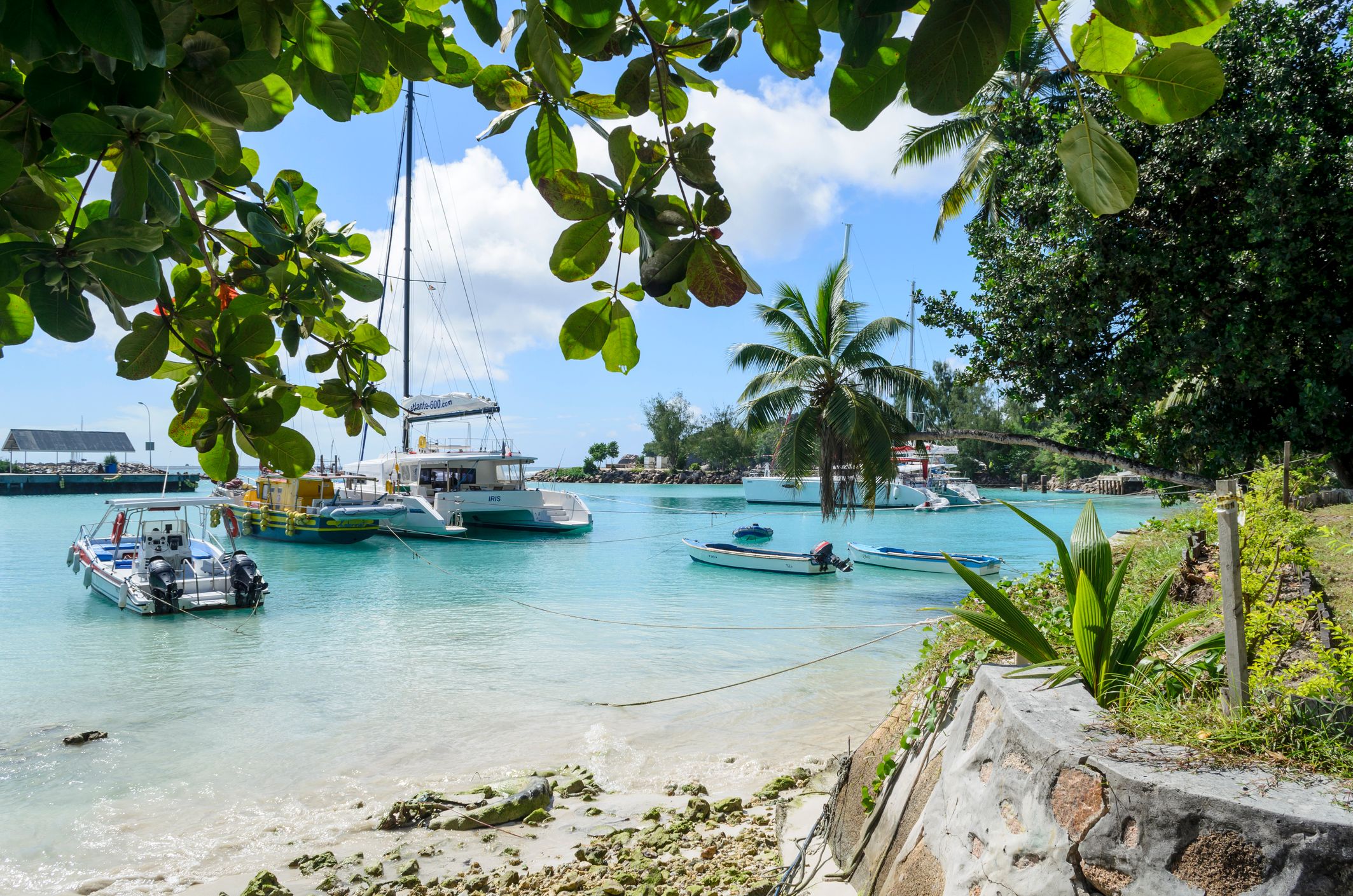
How much does sailing in the Seychelles cost?
The most suitable type of boat to explore Seychelles is definitely a catamaran. Not only because of its comfort and more space for food and water supplies but also because of its low draft. A two-week holiday on a catamaran for 8-10 people costs around €1,000 per person, including fees for parking, national park, fuel and food. Flight tickets, for example from Vienna, can cost you 700 euros or more per person.
Food and water are more expensive and not available everywhere. The best thing to do is to order food supplies through a charter company and have them delivered directly to the ship for a fee.
Fishing is allowed everywhere. Find out in advance which fish you should not catch. Many of the fish are toxic (especially those near corals), and you cannot get rid of their poison even after grilling them.
The best sailing destinations
The most popular and best accessible are the main Seychelles islands of Mahé, Praslin and La Digue. They are part of the so-called “inner (granite) Seychelles” and their primary tourist attraction. The outer (coral) islands also offer unforgettable experiences. These are ideal stops for underwater activities.
What's worth seeing and visiting?
You shall not leave the Seychelles paradise without experiencing the following:
- to admire the world’s most photogenic beaches with white sand, palm trees and massive granite stones (e.g. Source d’Argent and Coco Bay on the island of La Digue)
- to hold a rare and heavy palm coconut known as a “coco de mer” (on the island of Praslin and Curiese) - this coconut is the largest plant seed in the world and can weigh up to 20 kg. Every nut on the island is registered.
- to marvel at the majesty of the giant tortoises (on Curieuse and Cousin Island). The largest and oldest living turtle is 170 years old and weighs 300 kg.
- to observe the colourful underwater and bird world (anywhere)
- to observe an incredibly clear night sky without light smog (anywhere outside of cities)
- to taste Seychelles Takamaka rum and vanilla (anywhere)
Most popular islands
Mahé is the largest and most populated island, where 90% of the population lives. Legend has it that the treasure of the French pirate La Buse is hidden in it. Launay beach is definitely worth a visit. From Mahé, it is worth taking a trip to the island of Sainte Anne with a national park full of turtles and dolphins.
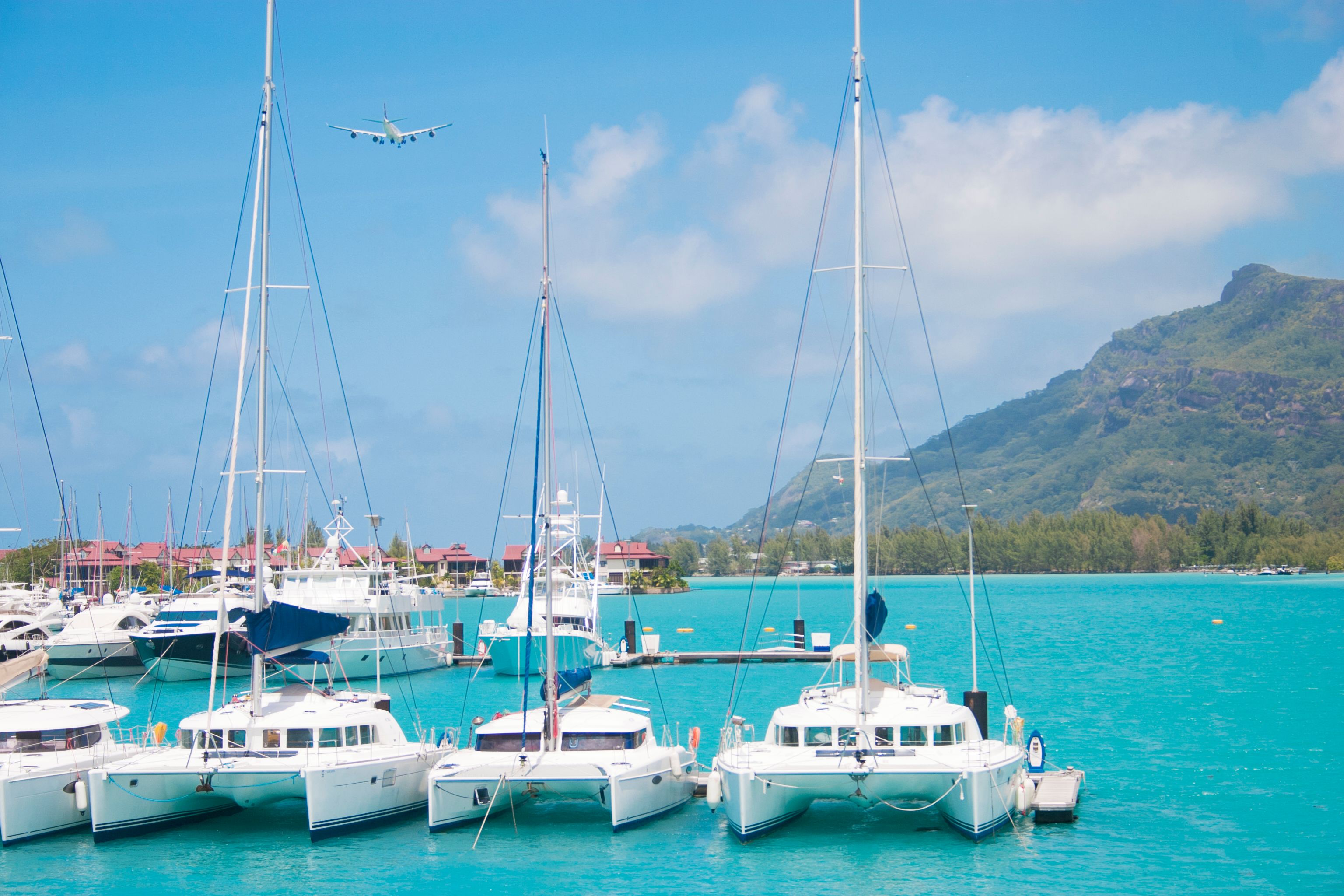
The most beautiful island is La Digue. The best way to know its beauty is on a rented bike. You can indulge in a perfect state of calmness on world-unique beaches with huge granite stones.
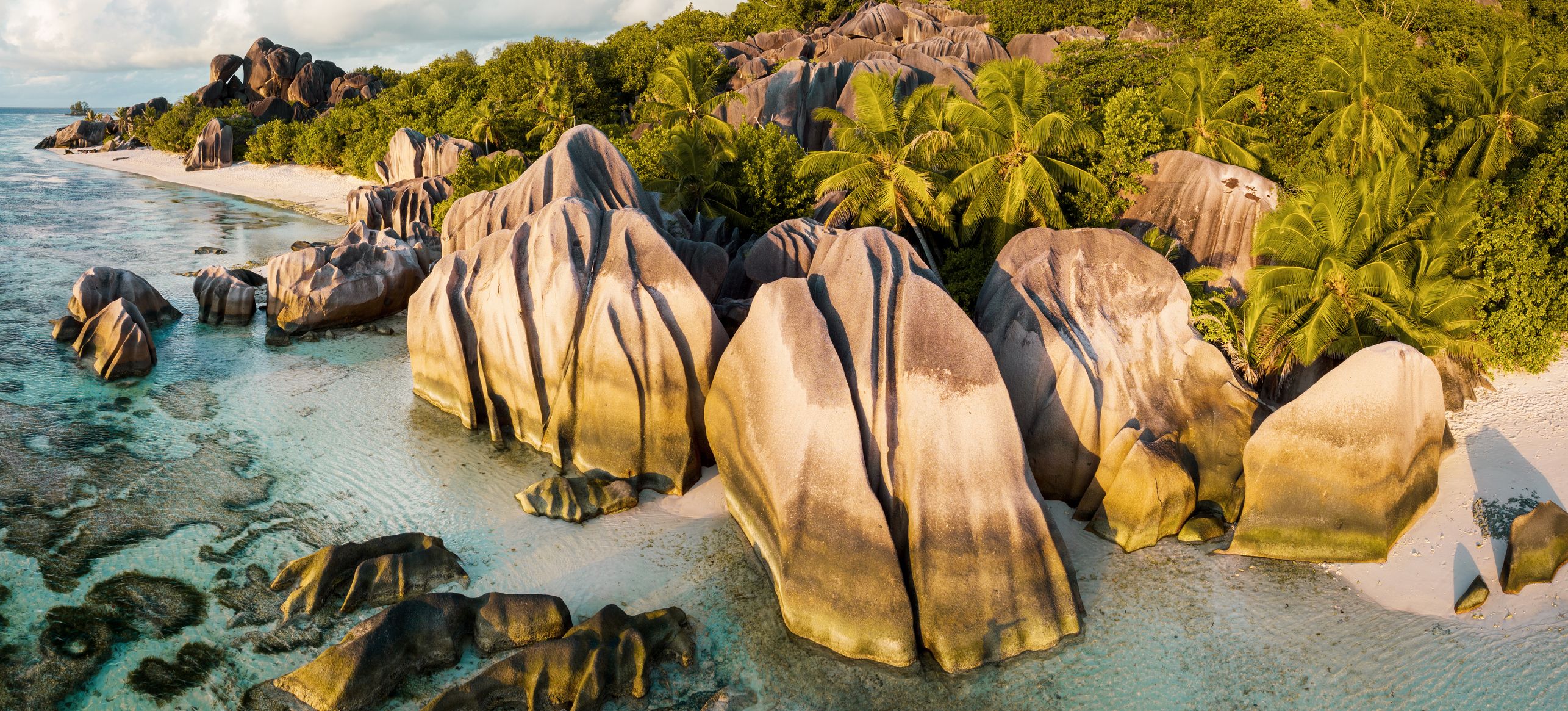
Praslin attracts tourists to unique phenomena in the island’s heart - the Vallée de Mai National Park (UNESCO World Heritage List). Endemic palms with “coco de mer'' fruits grow in this forest. An alternative or addition to visiting the park is a trek in the Fond Ferdinand nature reserve, which is larger and richer in endemic species than the Vallée de Mai. After climbing to the top in both parks, you will get rewarded with a marvellous 360° view of the surrounding islands. A pleasant anchorage with a beautiful beach with granite stones is Anse Lasio.
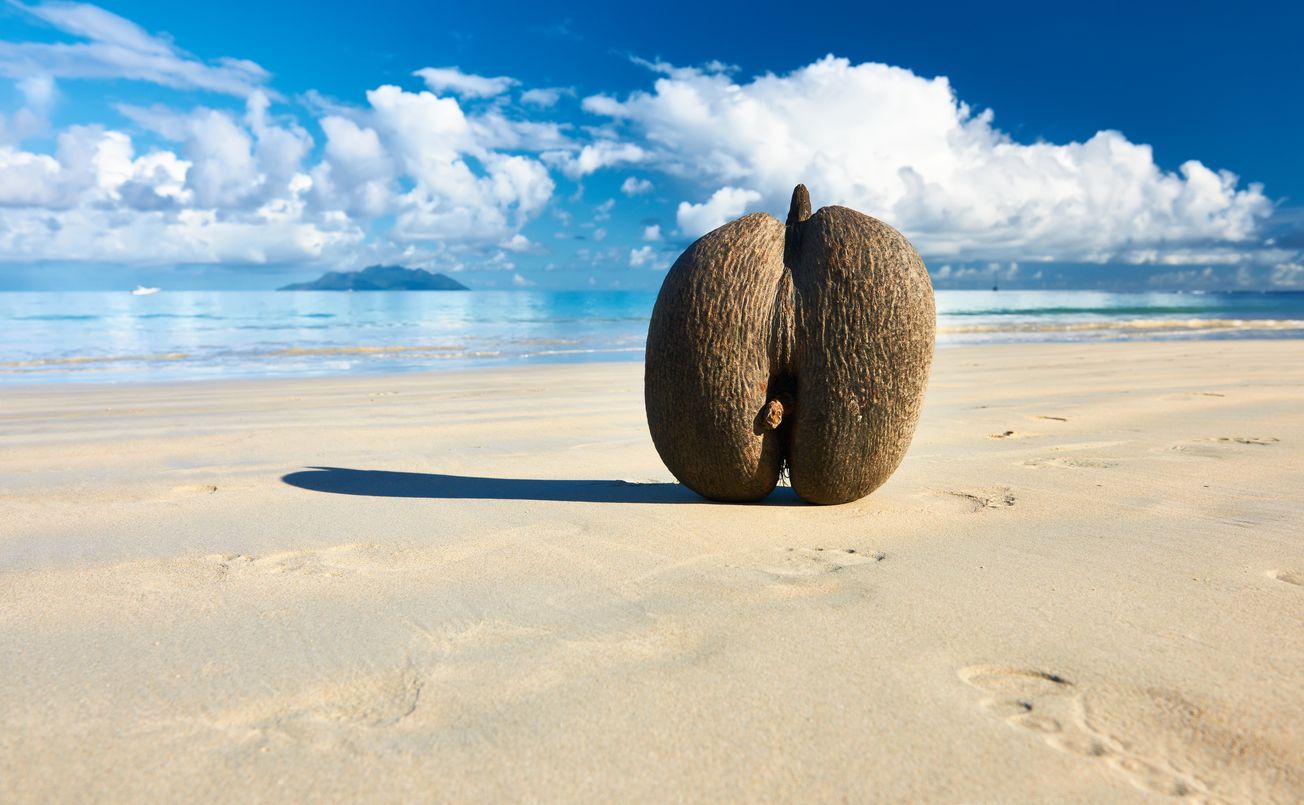
A visit to the park on Curieuse Island will be forever stamped on your memory. It is here where you can pet giant tortoises. You can only find this species in the Seychelles and the Galapagos Islands.
To enter Silhouette Island you need permission from the charter company. It is a beautiful mountainous island with an untouched jungle. For the best snorkelling, sail to Coco Island.
Example of a 14-day sailing route
It’s easy to put together your best sailing itinerary. The distances between the islands are relatively short, and you can adjust your itinerary flexibly. Mahé is approximately 23 nautical miles from Praslin and 30 from La Digue. You can sail at least 180 miles in 14 days.
An example of a popular route:
- Mahé - St. Anne - Mahé (Launay) - Silhouette - Praslin (Anse Lazio) - Curieuse - Praslin (Anse La Farine) - via Coco's Island/Félicite to La Digue - La Digue circuit - via Grand and Petite Soeur to Cousine - Mahé
You can find the route on Google Maps on this link.
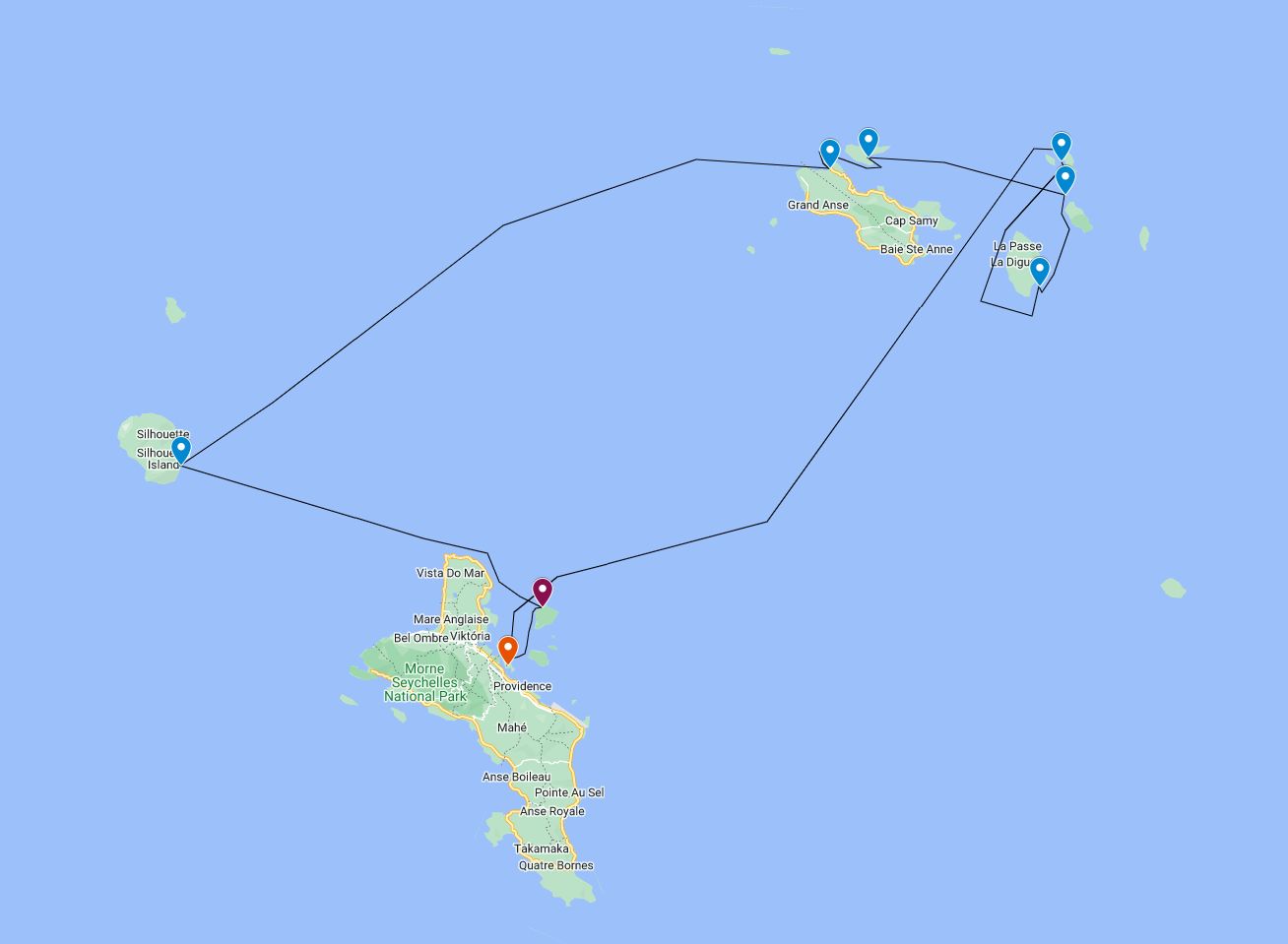
The Seychelles archipelago has one huge disadvantage. The islands are so unearthly magical that they will put a spell on you and you will not want to return home. Your sailing dream can come true thanks to these boats for rent.
Interesting facts about Seychelles:
- Seychelles is the wealthiest African country in terms of GDP per capita.
- French and English are spoken here.
- The original population does not exist here - in the 17th and 18th centuries, pirates inhabited the islands as a refuge; later, the archipelago was taken by France and subsequently colonised by England. Seychelles gained independence only in 1976.
- The archipelago comprises 115 islands, and forests cover 88% of them. Many islands are privately owned.
